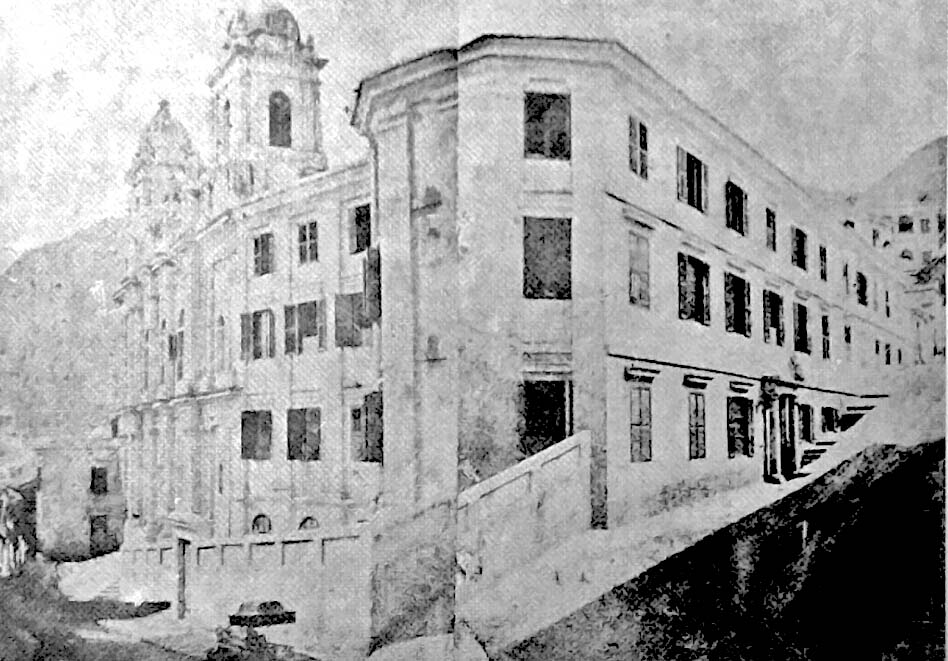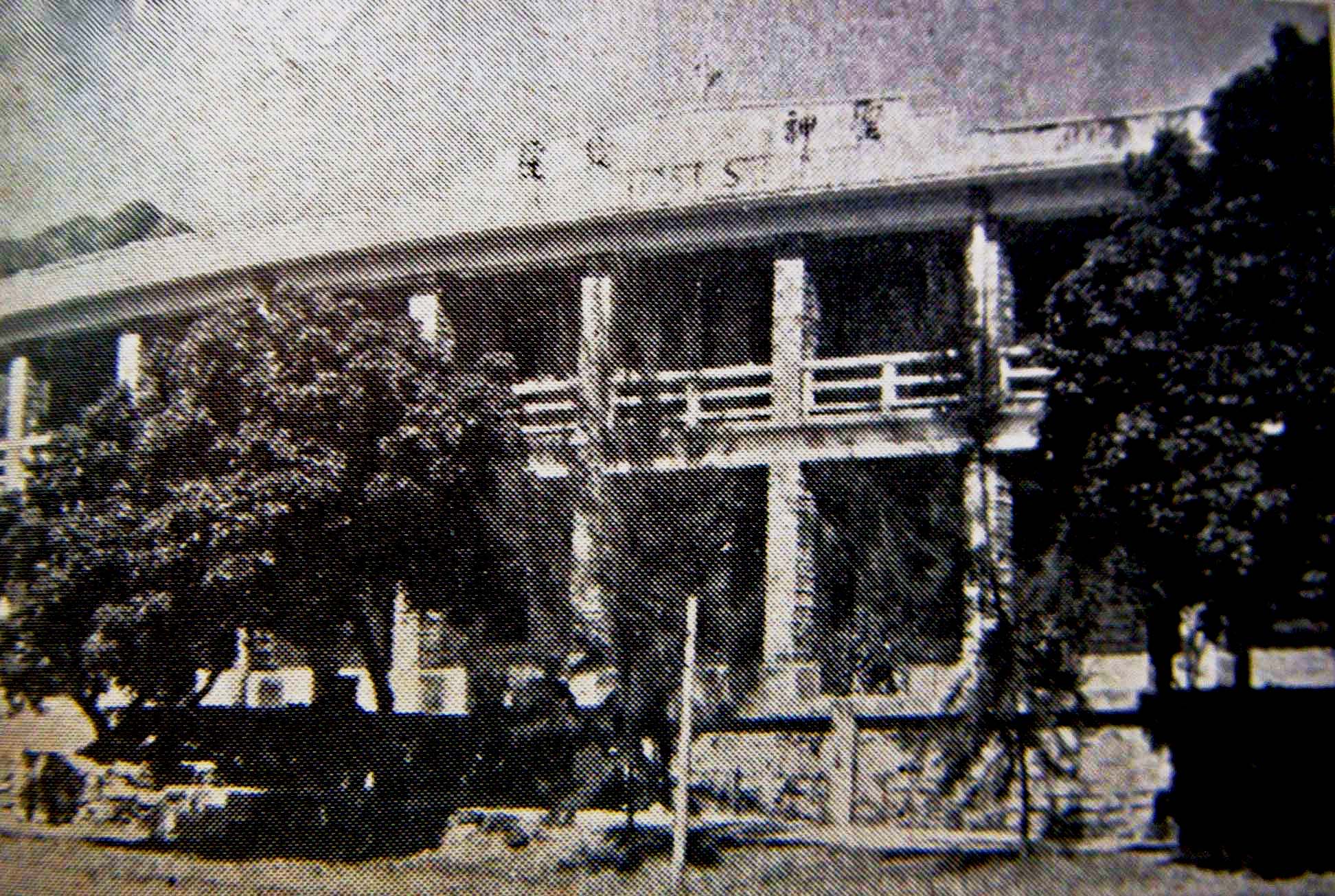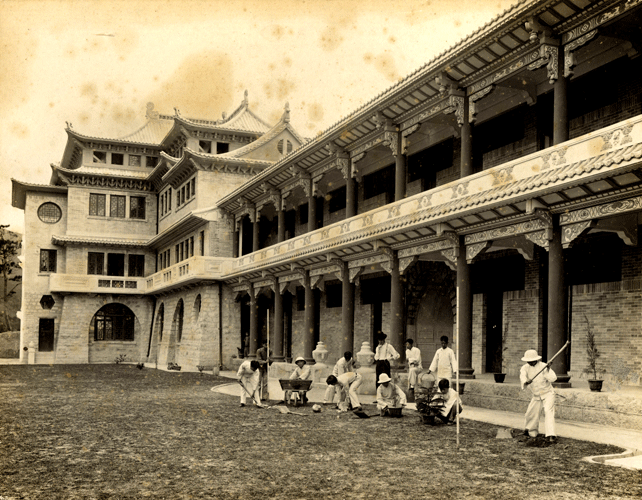
History of the Seminary
The Holy Spirit Seminary was established by the Catholic Diocese of Hong Kong, with the purpose of cultivating young people who are dedicated to serving the local church and to become priests. Its history dates back to 1841, the year that the Hong Kong Diocese was found. There were a composition two seminaries in the beginning. One was a Minor Seminary of the Diocese of Hong Kong, while the other was the South China General Seminary under the Congregation for the Propagation of Faith of the Holy See. It was not until 1964 that the South China General Seminary ceased operation and was taken over by the Diocese of Hong Kong. It then gradually evolved into the Holy Spirit Seminary today.
Catholic Mission seminary (1841-1888)
The seminary in Hong Kong was subordinate to the Congregation of Propagation of Faith of the Holy See. In April 1841, the British army landed in Hong Kong. The Holy See announced the establishment of the Apostolic Prefecture in order to provide pastoral care to Irish officer and soldier in Hong Kong. Fr. Theodore Joset, the first apostolic prefect, who brought 20 Chinese seminarians from Macau to Hong Kong and built a humble church on Wellington Street. At that time, the so-called "seminary" where the seminarians lived was just a thatched cottage beside the oratory.
A few months later, in order to build a formal sanctuary on the site, the seminarians had moved to a house in Wan Chai (current site of St. Francis of Canossian College) until June 1843, the year that the Church of the Immaculate Conception was completed on Wellington Street. They then moved back to the second floor of the mission house next to the church.
Seminary of Our Lady of Immaculate Conception (1888-1946)
It was not until 1846, had the second floor of the mission house officially become a local seminary, under the Apostolic Prefecture of Hong Kong. At the beginning of the seminary, there were only four or five seminarians each year. They first studied Latin, then philosophy and theology, and served the local parish when they were ordained. The first batch of seminarians ordained included: John Yeung (1858), Mark Leung (1861), Andrew Leung (1862), Stephen Chu (1866) and James Leung (1866).
The first building of the Seminary was the Cathedral today in Caine Road, finished building in 1888. In 1874, Hong Kong was promoted to be a Apostolic Vicariate. Bishop Giovanni Timoleone Raimondi (MEM), the first Vicar Apostolic, decided to build the Cathedral in Caine Road while selling the land on Wellington Street on 1880s. In 1888, the Cathedral was completed and named "Cathedral of the Immaculate Conception." The seminarians had then moved into a bungalow behind the Cathedral, which was named "Seminary of the Immaculate Conception."
In 1900, the seminary was moved to a three-storey building in front of the cathedral (the current site of Raimondi College). The seminarians lived there and assist in missionary work while studying.
Until the opening of the South China Regional Seminary, the Seminary of Immaculate Conception served as a "minor seminary" and a "major seminary" (the former provides secondary education and the latter provides philosophy and theological training) although it was not well-developed in scale and space. However, due to the limited teaching staff, after graduating from the minor seminary, seminarians were often sent to major seminaries in Macau or Penang, plus a few were sent to Rome or Naples.
First Synod of Bishops in China (1924)
In 1924, Archbishop Celso Costantini, the first Holy See nuncio to China, held the first bishop conference in Shanghai. They decided to set up 14 regional "regional seminaries" (Major seminary that serves multiple apostolic vicariates) across the country, including the establishment of the "South China General Seminary" in Hong Kong, which mainly receives seminarians from more than ten apostolic vicariates including Guangdong and Fujian provinces.
At the time, the only cities in South China that were capable for the construction of the general seminary were Hong Kong or Guangzhou. However, since Guangzhou was under the pastoral care of the M.E.P., while the French government had opposed to the establishment of diplomatic relations between the Holy See and China, the construction of the Seminary there will be subject to the French government. Moreover, Archbishop Gang Hengyi believed that no matter how the political situation changed, Hong Kong would still be subject to British jurisdiction. Therefore, he concluded that Hong Kong was a safe place. In the meantime, building the seminary in Hong Kong also provided liable access to the apostolic vicariates of South China.
The foundation of the South China Regional Seminary was laid in 1930 and opened the following year. It is directly under the Congregation of Propagation of Faith of the Holy See and managed by the Irish Jesuit priests. There were only 17 seminarians in the beginning, of which 11 were from Hong Kong. After a few years, seminarians from China came to Hong Kong one after another, that maintained the number of seminarians within 60 to 70. Due to the existence of the General Seminary, the Immaculate Conception Seminary immediately became a "minor seminary". After graduating, minors can go to the regional seminary to continue their formation. In 1934, the first batch of three local seminarians who graduated from the South China Regional Seminary had been ordained as priests.
Holy Spirit Minor Seminary (1946-1964)
In 1941, the Japanese captured Hong Kong. The minor seminary in the Hong Kong Apostolic Vicariate was, thus, forced to disband. 32 minor seminarians had to returned to their homes. Although the South China Regional Seminary conducted classes as usual, life was very difficult. All the students were transferred to the St. Joseph's Seminary in Macau by May 1945. It was not until 3 months later that the Japanese had surrendered, could they return to Hong Kong and continue their studies.
After the war, in 1946, the Holy See announced the establishment of sacred hierarchy in China. Hong Kong had then been promoted to be a diocese. However, due to the serious damage to the former site of the minor seminary, the diocese decided to build a new compound in Sai Kung (near Sai Kung Sun Tsun Catholic School) and officially named it "Holy Spirit Seminary". The minor seminary was reopened in 1949 when there were only seven seminarians.
However, since to Sai Kung area was remote and isolated, the seminarians were susceptible to malaria and it also made it difficult to hire professors. In 1957, the diocese moved the Holy Seminary to a land donated by the M.E.P. in Pok Fu Lam. In 1961, there was a total of 48 seminarians.
Holy Spirit Seminary (1964-present)
Since the Communist Party came to power in mainland China in 1949, most seminaries in the country ceased to operate. Many seminarians swarmed to Hong Kong, making the South China Seminary suddenly a "national" seminary. However, in the 1960s, the diocese of China had never sent seminarians to Hong Kong anymore. Therefore, the Holy See suspended the South China Regional Seminary in 1964 and handed over the site to the diocese of Hong Kong. The South China Seminary has trained about 250 priests for the church in 33 years.
The Holy Spirit Seminary was moved in on July 21 of the same year. It sustained both the minor and major seminaries, and was responsible for nurturing seminarians in the diocese of Hong Kong. In the 1970s, the Hong Kong government began to implement free education. Most of the young people would then consider the vocation of priesthood only after graduating from high school. Therefore, the seminary gradually stopped accepting minor seminarians and developed into the dioecian major seminary as it is today.
Since 1964, more than 40 seminarians have completed their formation in Holy Spirit Seminary and are ordained to priesthood.

Church of the Immaculate Conception, Wellington Street (1843-1886)

Seminary of the Immaculate Conception, Caine Road (1900)

Holy Spirit Minor Seminary, Sai Kung (1946-1957)
Holy Spirit Minor Seminary, Pok Fu Lam (1957-1964)

Completion of the South China Regional Seminary (1931)
First group of seminarians at the South China Regional Seminary (1931)